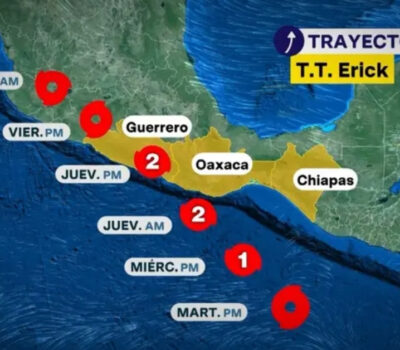With 40% of World Cup visitors expected to arrive through Cancún Airport, local and federal officials are ramping up efforts to improve infrastructure and promote the region as a gateway to Mexico.
As Mexico prepares to co-host the 2026 FIFA World Cup, tourism officials in Cancún are taking decisive steps to position the Caribbean destination as a key entry point for international fans. With major matches set to take place in cities across Mexico, the United States, and Canada, Cancún’s leaders see the event as a golden opportunity to not only welcome soccer fans, but also showcase the region’s world-renowned attractions.
Miguel Montes de Oca, director of International Tourism Promotion for the Municipal Tourism Office in the Benito Juárez City Council, outlined a multi-pronged strategy to align the city’s tourism offerings with the needs and interests of World Cup visitors.
“The plan for the World Cup includes strengthening connectivity and infrastructure, in addition to new promotional partnerships with Canadian and American World Cup venues,” Montes de Oca said in comments reported by La Jornada.
The tourism office’s objective is twofold: to attract sports fans who are already planning to attend matches, and to encourage travelers who are visiting for sun, sand, and cultural experiences to also take part in World Cup festivities. “We want visitors who come to Cancún for the World Cup to stay and discover much more of what Mexico has to offer, and we also want those who come primarily to enjoy the sea and the culture to be encouraged to attend a World Cup match,” he added.
Cancún is not slated to host any official World Cup games, but its role as a travel hub makes it a central player in Mexico’s broader tourism strategy. Tourism officials are working in close coordination with the federal and state governments, as well as other municipal offices, to design new tourist routes and travel packages that integrate the World Cup experience with local offerings in the Mexican Caribbean.
This includes plans to connect Cancún more seamlessly with match-hosting cities such as Mexico City, Guadalajara, and Monterrey, through both domestic flight routes and high-speed ground transport options. The idea is to provide World Cup attendees with easy access to major matches while offering them incentives to explore Cancún’s beaches, archaeological sites, nightlife, and culinary scene.
The importance of Cancún’s international airport cannot be overstated. With the 2026 World Cup expected to bring a surge in visitors from around the globe, an estimated 40% of international travelers heading to Mexico for the tournament are projected to enter through Cancún International Airport.
This projection has elevated the airport’s role to a top priority for both local and national leaders. Senator Eugenio Segura of Quintana Roo recently described the upcoming tournament as a “golden opportunity” to address existing issues and elevate the airport’s overall service quality.
“The airport must be ready,” Segura stated. “It’s not just a matter of handling increased traffic—we need to fix long-standing issues with customs processing, immigration wait times, and flight scheduling.”
Segura emphasized that ensuring a smooth and welcoming experience for travelers falls on all levels of government. “All authorities are responsible for ensuring optimal service. If we want to make a good impression and capitalize on this influx of tourism, we have to act now,” he said.
According to Montes de Oca, there is already ongoing coordination with both the federal Tourism Secretariat (SECTUR) and Quintana Roo’s state-level tourism agencies. Joint working groups are identifying weak points in infrastructure and service delivery and mapping out improvements ahead of the tournament.
“From marketing campaigns abroad to optimizing transportation and curating travel experiences, we are preparing on every front,” said Montes de Oca. He added that cooperation with other World Cup host cities in North America will be key to developing joint promotional materials and digital tools that guide travelers across borders and through different regions of Mexico.
The 2026 FIFA World Cup is expected to draw millions of spectators to North America, making it the largest tournament in the history of the sport. For Cancún, which has long relied on tourism as its economic engine, the event offers a chance to diversify its offerings and tap into new demographics.
With the clock ticking down to kickoff, Cancún’s tourism and infrastructure plans are set to accelerate, with both public and private sectors working to ensure the city is ready—not just to receive World Cup fans, but to win them over.
With 40% of World Cup visitors expected to arrive through Cancún Airport, local and federal officials are ramping up efforts to . . .












